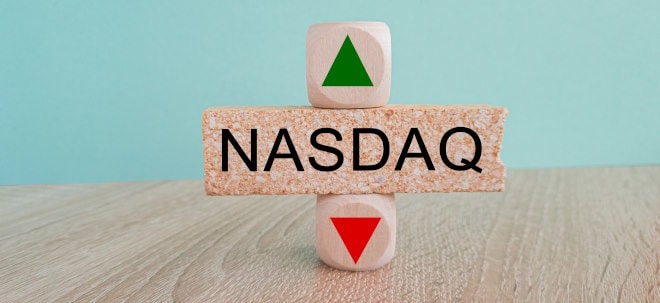Falls Börsenfan auch Englisch lesen und verstehen kann:
The Siberia Gold Belt
Siberia controls the 35km long Siberia Gold Belt, a geological contact that hosts the high grade Siberia Gold Camp deposits as well as its recent Black Rabbit discovery.
Current and historic gold endowment exceeds 800,000 ounces, principally on the 10% portion of the belt that is outcropping.
Much of this gold belt is obscured by thin cover and remains untested. Siberia has already generated numerous high priority targets and will soon be aggressively testing the belt.
Rivers of Gold - Carnage
The Carnage project area is located to the east of Theil Well / Siberia South and proximal to the Siberia Gold Project within the Kalgoorlie mining region.
Siberia controls the only unexplored (soil covered) portion of a gold bearing geological unit that hosts in excess of 10,000,000 ounces of gold. Very limited drilling indicates that gold bearing contacts and structures exist that are analogous to major deposits located to the east.
Summary
Advanced exploration target in multi-million ounce gold field. “Blind” target under transported material that hindered earlier explorers. Current drilling targeting structural and geochemical targets within broad zone of > 1 g/t Au gold mineralisation.
Geology
The project area is extensively covered by Quaternary alluvial deposits, which vary in thickness up to 70 metres, in the middle of a palaeochannel that appears to be controlled by a north south trending fault that bisects the tenements. The tenements are substantially covered by alluvial material and underlain by a complex folded and faulted antiformal greenstone sequence of basalt and gabbro, intruded by the Ora Banda Sill.
Previous exploration targeted mineralisation within the palaeochannel, which is confined to a number of discrete horizons:
The base of the sand unit in contact with the underlying saprolite. Variable intervals within the sand-sandy clay horizon. An interval at about 50 metres depth within the puggy lacustrine clays. This horizon is interpreted to be a supergene effect related to the water table. A puggy clay unit at relatively shallow depths (20-30 metres).
The bedrock geology consists of a complex folded and faulted antiformal greenstone sequence of basalt, porphyritic basalt and gabbro intruded by the Ora Banda Sill. Drilling has intersected all these lithologies however the folded and faulted nature of the bedrock has been interpreted from the regional magnetic interpretation.
Much of the drilling has intersected a distinctive porphyritic basalt. This unit, which hosts the nearby 520,000+ Oz gold Ora Banda mine, has been intruded by ultramafic rocks of the Ora Banda Sill. While results from the previous drilling of the paleochannel were highly encouraging, some very exciting results were also obtained where the drilling terminated in the underlying bedrock.
Current investigations include drilling to test a large surface gold anomaly known as the Olympic Torch prospect (8 km x 4 km coherent gold in soil anomaly) located adjacent to several existing open pits on neighbouring tenure.
Ida
Summary
Extensive ground holding in prospective, gold-producing region. Currently exploring with regional drilling in Olympic Torch exploration area. In excess of 419,000 oz Au in JORC compliant resources. Optimised open pit shells produced at A$550 at Lady Ida Project area Pre-Feasibility study underway to treat oxide resources in heap leaches process on site and truck higher-grade material.
Introduction
The Ida Gold Project comprises a 419,000 ounce resource contained within two main deposits along the gold bearing Ida Shear Zone. Siberia also controls a continuous 75km long extent of this shear zone to the north and south of the Ida Gold Camp.
Delta Gold NL mined the Lizard, Iguana and Blue Tongue deposits in 2000-01. Material was transported 75km to the Greenfields mill in Coolgardie. Production from these pits was 699,152t at 2.92 g/t Au. Recovery was in excess of 94% for 61,700 ounces of gold produced.
Iguana is the largest deposit at Lady Ida, and was trial mined by Delta in 2000. Drilling has delineated a high-confidence gold resource (largely Indicated).
Importantly, all necessary approvals for access and mining of the Ida Gold Project deposits have been granted and the project is ready for immediate development. Ore from the Ida Project can be easily trucked to Davyhurst or Coolgardie (approximately 70 kilometres) for treatment. In addition, alternative stand-alone treatment facilities are currently being investigated.
Location
The Ida project is located within the Kalgoorlie region and extends from the great Eastern Highway, approximately 50km west of Coolgardie, northwards to within 20km of Croesus Mining’s Davyhurst mine and treatment facility.
Tenure and Corporate Agreements
Siberia acquired the Lady Ida mine tenements from Placer Dome Asia Pacific Limited (PDAP) in August 2003. PDAP holds a 2% NSR royalty over all gold produced and has the right to ‘claw-back’ 60% of the project by repaying 3 times accumulated expenditure to date should the Indicated and Measured resource base exceed 750,000 oz Au.
Geology
The Ida Fault is a laterally extensive, deep-seated crustal shear zone which has been traced for over 100km and is associated with several large (> 250,000 oz Au) gold deposits. The Ida Fault delineates the boundary between the granite terrains of the Southern Cross Province to the west and the Eastern Goldfields Province to the east.
The Lady Ida project site is located approximately in the middle of the Ida project tenure, with the northern portion of the project tenure covering the Olympic Torch exploration area.
The Lady Ida project site is hosted in amphibolite facies mafic and sedimentary rocks which have undergone pervasive north-south, sub vertical foliation and shearing. The Mine site hosts three previously mined deposits.
Lady Ida Mine geology plan
The mineralisation styles observed in the field and from research have shown northwest to north-northwest trending zones of mineralisation are cross-cut by northeast trending zones of mineralisation. This model appears to be well supported by soil and auger sampling. A structural model based on geochemical anomalism and TMI geophysical surveys has been prepared.
Solid geology interpretation (GSWA Report 78) with tenure, gold resources and soil anomalism
Status and Current Work
Siberia is currently conducting investigations into the potential for open pit mining with heap-leach treatment of oxide material at Lady Ida (Iguana Deposit). A Pre-Feasibility study is now being undertaken, in which large (100kg) samples have been obtained for leach test work.
Current drilling at Olympic Torch (MPI programme) is < 50% completed, with 55 holes of 144 planned drilled.
|


 Thread abonnieren
Thread abonnieren


